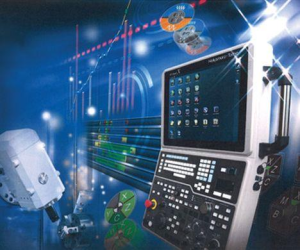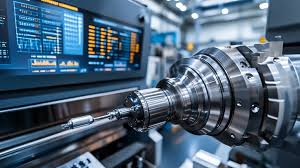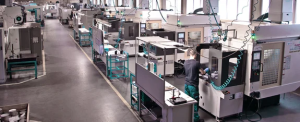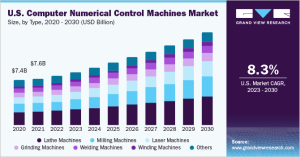Key Features of Smart CNC Systems
Smart CNC (Computer Numerical Control) systems have become an indispensable part of modern manufacturing processes. These systems transcend the limitations of traditional CNC machines, bringing greater flexibility, precision, data-driven decision-making, and autonomy to production lines. A detailed examination of these systems is of great importance both industrially and academically. Below, we comprehensively explore the core features of these systems.

1. Advanced Data Management and Analytics
Smart CNC machines can collect and analyze large amounts of data during production. This data management process spans areas like production optimization and quality control.
- Real-Time Data Collection: Sensors monitor critical parameters such as vibration, temperature, motor speed, and tool wear in real-time.
- Data Analytics: Collected data is processed using big data analytics techniques, providing insights for process improvement.
- Predictive Maintenance: AI algorithms monitoring machine performance predict potential failures, preventing unplanned downtime.
Applications:
- Ensuring production adheres to quality standards.
- Optimizing tool change intervals.
- Increasing machine utilization rates.


2. Customizability and Flexible Manufacturing
In today’s industries, producing customized products to meet customer demands is essential. Smart CNC systems offer a high degree of flexibility to meet this demand.
- Dynamic Configuration: Machines can be reprogrammed and machining parameters adjusted quickly for different product types.
- Modular Hardware and Software: New modules or features, such as an additional axis or more precise sensors, can be added when required.
- Multi-Tasking Capability: These systems can perform multiple complex tasks simultaneously, saving time.
Applications:
- Producing small-scale, customized parts for various sectors.
- Performing high-precision tasks in automotive, aerospace, and medical industries.
3. IoT Integration and Connectivity
Smart CNC machines operate seamlessly with the Internet of Things (IoT), creating a digital manufacturing ecosystem.
- Machine-to-Machine Communication (M2M): CNC machines share data and synchronize operations with other devices in the production line.
- Cloud Computing and Storage: Machine data is sent to the cloud for analysis and storage, enabling global access and remote control.
- Digital Twin Technology: The physical attributes of the machine are replicated in a digital environment, allowing optimization studies.
Applications:
- Remote management of global production lines.
- Utilizing digital simulations in R&D processes.

4. Autonomous Decision-Making and Artificial Intelligence
Smart CNC systems can make decisions and optimize processes without human intervention.
- Learning Systems: Machines improve themselves using data from previous production processes.
- Adaptive Control: If material changes or abnormalities are detected during production, the system adjusts machining parameters automatically.
- Error Detection: Operations are paused or corrective actions are initiated if a defect is detected during machining.

Applications:
- Rapid prototyping.
- Precision manufacturing processes that adhere to zero-defect policies.
5. Energy Efficiency and Sustainability
Smart CNC systems aim to minimize energy consumption and reduce environmental impacts.
- Smart Energy Management: The system consumes energy only when necessary and optimizes idle times.
- Low Carbon Footprint: Energy-efficient motors and eco-friendly materials are employed.
- Waste Management: Tool and material optimization reduce waste production.
Applications:
- Adhering to environmental sustainability standards.
- Integrating renewable energy sources into production lines.
6. User-Friendly Design and Safety
Smart CNC machines enhance user experience with intuitive interfaces while being equipped with multi-layered safety systems.
- Intuitive HMI (Human-Machine Interface): Graphic interfaces allow users to control machines effortlessly.
- Remote Access: Production lines can be monitored and controlled via mobile devices.
- Operator Safety: Collision prevention systems and emergency stop mechanisms ensure safety.
Applications:
- Operator-friendly systems for educational and learning purposes.
- Ensuring safety in high-risk production environments.

Conclusion
Smart CNC systems play a significant role in the digital transformation of industries. With advanced data analytics, customizable manufacturing, IoT compatibility, energy efficiency, safety, and AI support, these machines form the backbone of future production processes. For companies aiming to tackle industrial challenges and stand out in global competition, smart CNC systems represent a long-term strategic investment.
A detailed analysis and proper implementation of these systems not only enhance production efficiency but also reduce costs, paving the way for a sustainable future.








